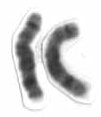|
SLC39A4
Zinc transporter ZIP4 is a transmembrane protein which in humans is encoded by the ''SLC39A4'' gene. It is associated with acrodermatitis enteropathica Acrodermatitis enteropathica is an autosomal recessive metabolic disorder affecting the uptake of zinc through the inner lining of the bowel, the mucous membrane. It is characterized by inflammation of the skin (dermatitis) around bodily openings .... See also * Solute carrier family References External links OMIM entry on ACRODERMATITIS ENTEROPATHICA, ZINC-DEFICIENCY TYPE; AEZ * Solute carrier family {{membrane-protein-stub ... [...More Info...] [...Related Items...] OR: [Wikipedia] [Google] [Baidu] |
Acrodermatitis Enteropathica
Acrodermatitis enteropathica is an autosomal recessive metabolic disorder affecting the uptake of zinc through the inner lining of the bowel, the mucous membrane. It is characterized by inflammation of the skin (dermatitis) around bodily openings (periorificial) and the tips of fingers and toes (acral), hair loss (alopecia), and diarrhea. It can also be related to deficiency of zinc due to other, i.e. congenital causes. Other names for ''acrodermatitis enteropathica'' include Brandt syndrome and Danbolt–Cross syndrome. Signs and symptoms Individuals with acrodermatitis enteropathica may present with the following: * Blistering of skin * Dry skin * Emotional lability * Glossitis * Pustule Alopecia (loss of hair from the scalp, eyebrows, and eyelashes) may occur. Skin lesions may be secondarily infected by bacteria such as ''Staphylococcus aureus'' or fungi such as ''Candida albicans''. These skin lesions are accompanied by diarrhea. Genetics Acrodermatitis enteropathica, in te ... [...More Info...] [...Related Items...] OR: [Wikipedia] [Google] [Baidu] |
Transmembrane Protein
A transmembrane protein (TP) is a type of integral membrane protein that spans the entirety of the cell membrane. Many transmembrane proteins function as gateways to permit the transport of specific substances across the membrane. They frequently undergo significant conformational changes to move a substance through the membrane. They are usually highly hydrophobic and aggregate and precipitate in water. They require detergents or nonpolar solvents for extraction, although some of them (beta-barrels) can be also extracted using denaturing agents. The peptide sequence that spans the membrane, or the transmembrane segment, is largely hydrophobic and can be visualized using the hydropathy plot. Depending on the number of transmembrane segments, transmembrane proteins can be classified as single-span (or bitopic) or multi-span (polytopic). Some other integral membrane proteins are called monotopic, meaning that they are also permanently attached to the membrane, but do not pass ... [...More Info...] [...Related Items...] OR: [Wikipedia] [Google] [Baidu] |
Gene
In biology, the word gene (from , ; "...Wilhelm Johannsen coined the word gene to describe the Mendelian units of heredity..." meaning ''generation'' or ''birth'' or ''gender'') can have several different meanings. The Mendelian gene is a basic unit of heredity and the molecular gene is a sequence of nucleotides in DNA that is transcribed to produce a functional RNA. There are two types of molecular genes: protein-coding genes and noncoding genes. During gene expression, the DNA is first copied into RNA. The RNA can be directly functional or be the intermediate template for a protein that performs a function. The transmission of genes to an organism's offspring is the basis of the inheritance of phenotypic traits. These genes make up different DNA sequences called genotypes. Genotypes along with environmental and developmental factors determine what the phenotypes will be. Most biological traits are under the influence of polygenes (many different genes) as well as gen ... [...More Info...] [...Related Items...] OR: [Wikipedia] [Google] [Baidu] |


